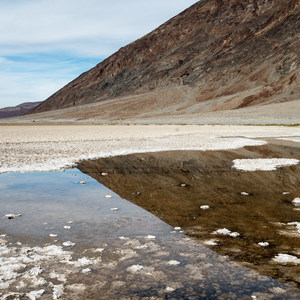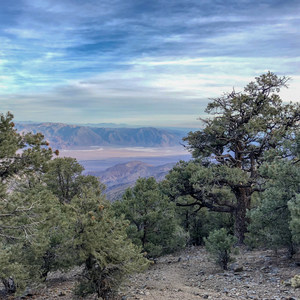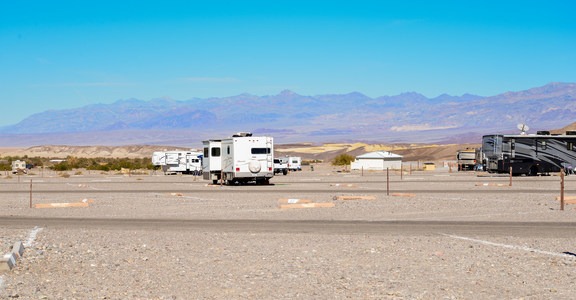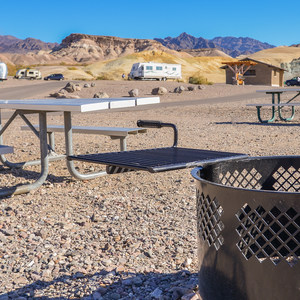This 17-mile out-and-back route through Hanaupah Canyon is nestled within Death Valley National Park. Hanaupah Canyon Road, an unpaved path, carves its way into the rugged Panamint Range, guiding adventurers through one of Death Valley's most picturesque canyons.
Originating from Telescope Peak, the park's highest summit, Hanaupah Canyon descends to Badwater Basin, North America's lowest point. This transition from peak to basin unfurls a landscape of stark contrasts, with the trail ascending gradually amidst towering cliffs and pockets of desert oasis.
Hanaupah Canyon Road caters to hiking, camping, and backpacking enthusiasts and accommodates high-clearance vehicles.
ROUTE DESCRIPTION
The start of the route is accessible via West Side Road, a dirt road that circles the west side of Death Valley. West Side Road is generally accessible for most cars; however, it is always advisable to contact the ranger station in advance to find out about current road conditions.
The journey begins on a relatively flat section, with the vast expanse of Death Valley's floor stretching out behind you. As you progress, the trail starts to rise gently, weaving its way into Hanaupah Canyon. The further you venture into the canyon, the more the landscape transforms, with the dry desert giving way to areas of lush vegetation fed by the occasional water source.
The road is suitable for hikers of all experience levels, though the loose gravel and occasional sandy patches require careful footing. The area is great for exploring and for backcountry camping.
The road's end marks the turn around point for this route and the boundary for vehicles.
TERRAIN AND SCENERY
The terrain varies from sandy washes to rocky trails, with sections that offer a mild challenge due to elevation gain. The scenery is dominated by the dramatic cliffs of the canyon walls, which change color with the passing of the day. Wildlife sightings might include desert bighorn sheep perched on high ledges, as well as a variety of bird species that call the canyon home.
PERMITS AND CAMPING
No specific permits are required for day hiking on Hanaupah Canyon Road, but visitors planning an overnight stay in the backcountry should check with the National Park Service for the latest regulations and permit requirements. Dispersed camping is allowed in certain areas, following Leave No Trace principles to minimize impact on the environment.
PARKING AND ACCESS
Parking is available at the trailhead, which is accessible by high-clearance vehicles due to the unpaved nature of the access road. It's advisable to check road conditions before your visit, especially after weather events that may affect trail accessibility.
CONSIDERATIONS
-
Hikers may encounter high clearance vehicles along Hanaupah Canyon Road.
-
Carry plenty of water, as sources along the trail are limited and seasonal.
-
Be mindful of temperature extremes, particularly during summer months when daytime temperatures can soar.
-
Inform someone of your hiking plan and expected return time.























Comments
Sign In and share them.